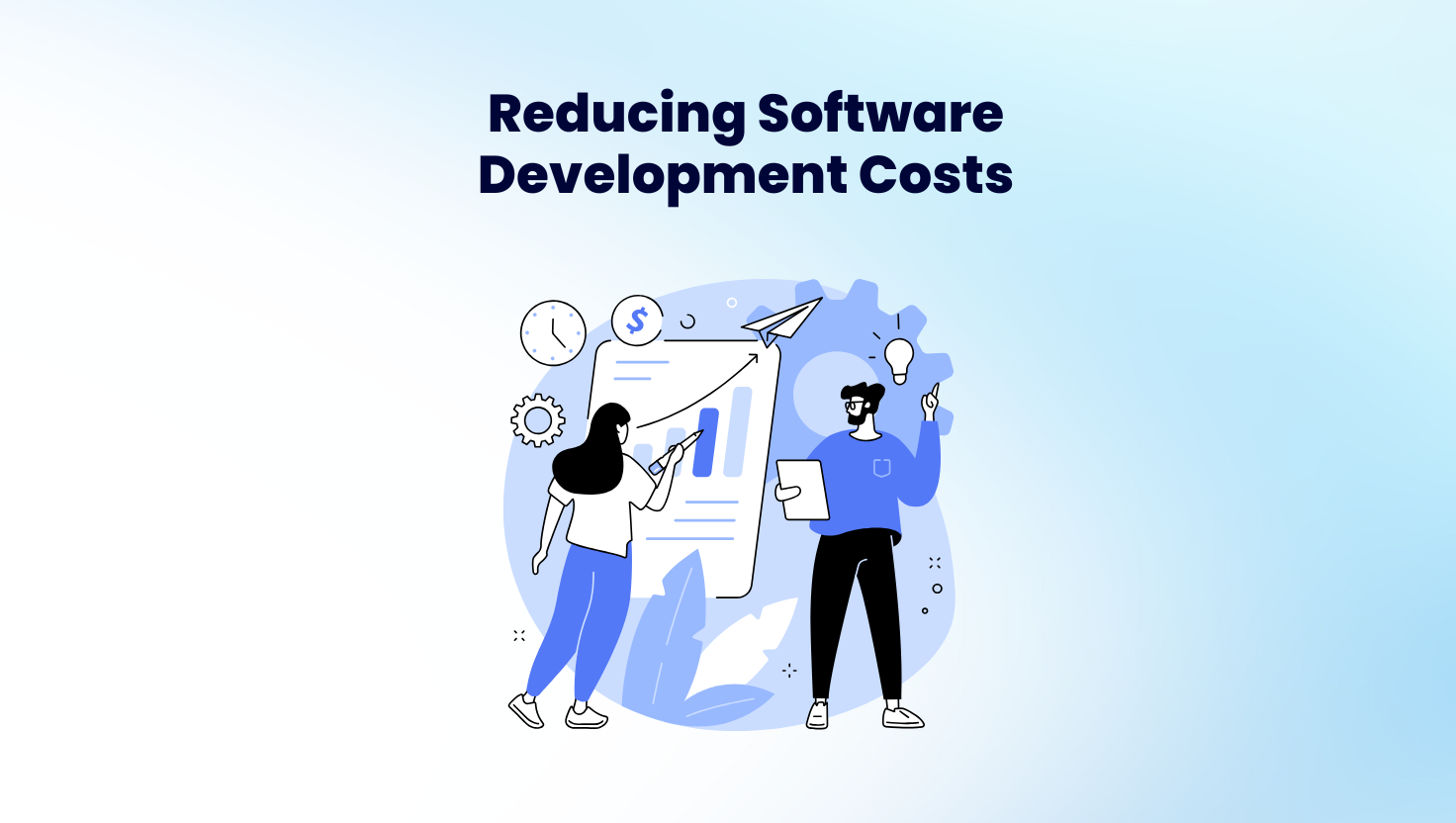
13 Mar How to Reduce Software Development Costs Without Compromising Quality
Developing software can be a significant investment, especially for businesses looking to build scalable, high-performance applications. However, reducing costs without sacrificing code quality, security, and functionality is a challenge. Many companies try to cut expenses, but poor cost-cutting strategies can lead to inefficiencies, technical debt, and low-quality software.
This article explores practical strategies to reduce software development costs while maintaining high quality, ensuring your business gets the best value from its investment.
1. Plan Your Software Development Strategically
One of the biggest mistakes in software development is poor planning. Without a well-defined strategy, projects often experience scope creep, timeline delays, and budget overruns.
How to Optimize Planning:
- Clearly define your project scope, features, and objectives before development begins.
- Prioritize must-have features over unnecessary functionalities.
- Break down the project into manageable phases using Agile methodologies.
- Use a Minimum Viable Product (MVP) approach to test the core features before investing in a full-scale product.
Proper planning prevents costly revisions and ensures that resources are used efficiently.
2. Choose the Right Development Approach
Your choice of software development methodology impacts costs significantly.
Best Approaches for Cost Efficiency:
- Agile Development – Allows for incremental development, so businesses can adjust their priorities based on real-time feedback.
- Lean Development – Eliminates unnecessary features and focuses on delivering only what adds value to the end user.
- DevOps Practices – Integrates development and operations teams to streamline workflows and reduce deployment failures.
Using an iterative approach reduces rework and ensures faster time-to-market, saving costs in the long run.
3. Leverage Open-Source Technologies
Instead of investing in expensive proprietary tools, consider using open-source software for cost savings.
Benefits of Open-Source Solutions:
- No licensing fees, reducing upfront costs.
- Strong developer community support for continuous improvements.
- Compatibility with multiple platforms and frameworks.
Popular open-source tools for software development include:
- Backend Frameworks: Node.js, Django, Ruby on Rails
- Frontend Libraries: React, Vue.js, Angular
- Databases: PostgreSQL, MySQL, MongoDB
- CI/CD Tools: Jenkins, GitLab CI, CircleCI
Choosing well-supported open-source technologies can help reduce software costs without compromising quality.
4. Outsource to a Reliable Software Development Partner
Hiring an in-house team can be expensive, requiring costs for salaries, benefits, training, and infrastructure. Outsourcing software development is a cost-effective alternative that allows businesses to:
- Access top talent at lower costs.
- Scale teams up or down based on project needs.
- Reduce overhead costs like office space and equipment.
How to Choose the Right Development Partner:
- Look for experience and expertise in your industry.
- Ensure they follow best practices in software development.
- Evaluate their portfolio and client reviews.
- Choose a partner that aligns with your business goals.
Companies like PT. KDN offer cost-effective software development solutions tailored to business needs, ensuring high-quality and scalable applications.
5. Use Cloud-Based Infrastructure
Traditional on-premise infrastructure requires significant investment in hardware, maintenance, and IT staff. By switching to cloud computing, businesses can significantly reduce software development costs.
Why Choose Cloud-Based Solutions?
- Pay-as-you-go pricing eliminates upfront infrastructure costs.
- Auto-scaling ensures businesses only pay for the resources they use.
- Improved security and backup options reduce the risk of data loss.
Popular cloud service providers like AWS, Google Cloud, and Microsoft Azure offer flexible solutions to optimize IT expenses.
6. Automate Testing and Deployment
Manual testing and deployment processes are time-consuming and costly. Automating software testing and deployment reduces errors and speeds up development cycles.
Key Automation Tools:
- Selenium for automated UI testing.
- JUnit for unit testing.
- Docker for containerized deployment.
- Kubernetes for managing application scalability.
By integrating CI/CD (Continuous Integration and Continuous Deployment) pipelines, businesses can reduce software release time while maintaining quality.
7. Focus on Code Reusability
Developing code from scratch for every project increases costs. Code reusability allows developers to use pre-built components, reducing time and effort.
How to Maximize Code Reusability:
- Use modular architecture so code can be reused in different applications.
- Develop shared libraries for commonly used functionalities.
- Utilize API-driven development for seamless integration with third-party services.
Building on existing codebases speeds up development while maintaining software stability.
8. Reduce Maintenance Costs with Proper Documentation
Poor documentation leads to confusion, inefficiencies, and additional costs when making updates. Well-documented code and processes make it easier for developers to maintain software without extra effort.
Best Documentation Practices:
- Write clear comments within the code.
- Create developer-friendly API documentation.
- Maintain a version-controlled knowledge base for software updates.
Proper documentation reduces dependency on specific developers, ensuring smooth transitions and cost savings.
9. Optimize Performance to Avoid Future Expenses
Inefficient code and architecture lead to slow performance, high operational costs, and frequent bug fixes. By focusing on optimization from the start, businesses can minimize future costs.
Performance Optimization Tips:
- Use efficient algorithms and data structures.
- Optimize database queries to prevent slow response times.
- Implement caching techniques to reduce server load.
- Regularly perform code reviews to eliminate technical debt.
By ensuring high performance, businesses can prevent expensive post-launch optimizations.
10. Minimize Feature Overload
Adding too many features increases development time, costs, and complexity. Focus on delivering core functionalities first before scaling with additional features.
How to Prioritize Features:
- Conduct market research to determine user needs.
- Develop an MVP (Minimum Viable Product) before adding advanced features.
- Continuously collect user feedback to enhance functionality.
Avoiding feature overload helps businesses save costs and improve user experience.
Why PT KDN is the Right Partner for Cost-Effective Software Development
At PT KDN, we specialize in delivering high-quality software solutions while optimizing costs for businesses. Our development team ensures:
- Strategic project planning to avoid unnecessary expenses.
- Expertise in Agile development for fast, flexible delivery.
- Use of open-source and cloud-based solutions for cost efficiency.
- Seamless automation for reduced testing and deployment costs.


Sorry, the comment form is closed at this time.